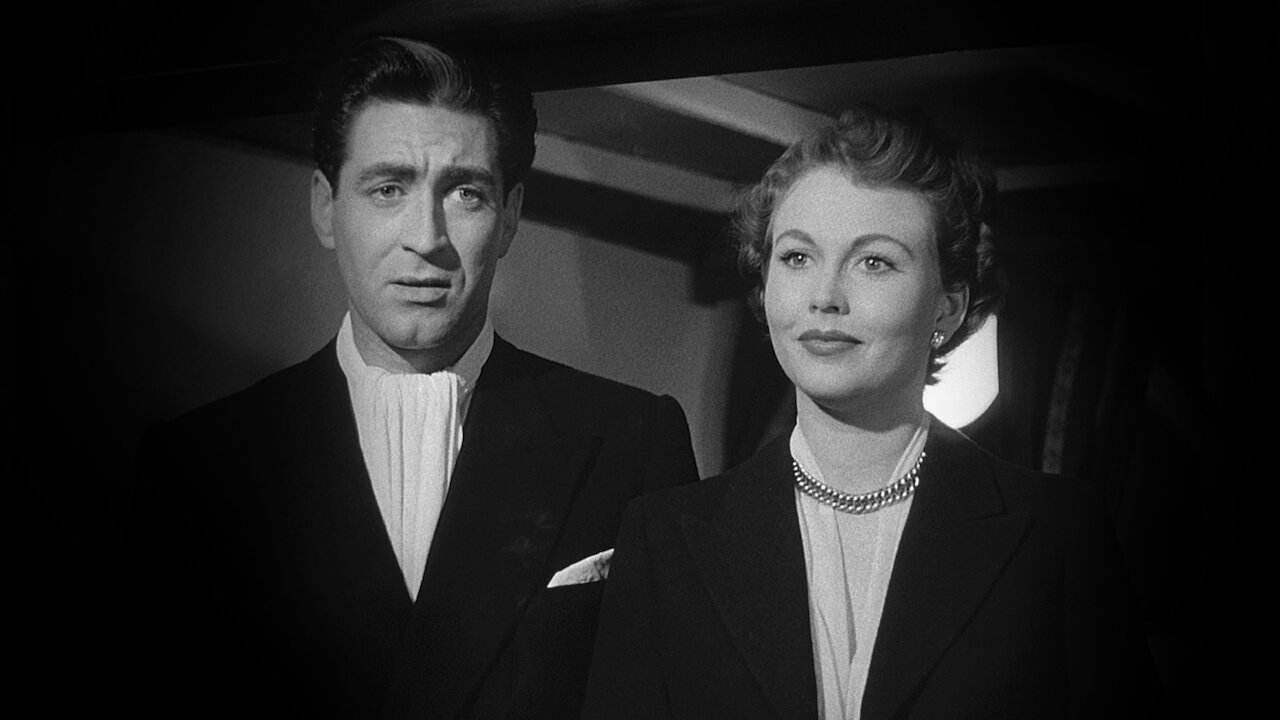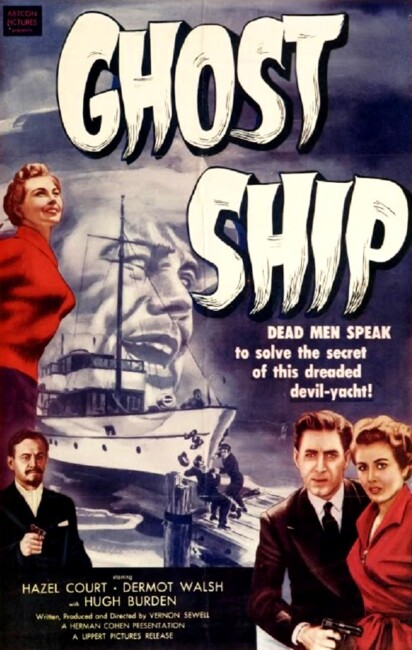Crew
Director/Screenplay – Vernon Sewell, Additional Dialogue – Philip Thornton, Producers – Nat Cohen & Stuart Levy, Photography (b&w) – Stanley Grant, Music – Eric Spear, Art Direction – George Harlan. Production Company – Nat Cohen-Stuart Levy.
Cast
Dermot Walsh (Guy Thornton), Hazel Court (Margaret Thornton), Hugh Burden (Dr Fawcett), Joss Ambler (Yard Manager), Mignon O’Doherty (Mrs Manley), John Robinson (Mansel), Hugh Latimer (Peter), Joan Carol (Mrs Martineau)
Plot
Guy and Margaret Thornton are taken with and buy the steam-yacht Cyclops and start planning to turn into a home. They are warned that the yacht’s previous owner, the atomic scientist Professor Martineau, and two others disappeared under mysterious circumstances while at sea and that subsequent owners have reported it as haunted. After they buy the boat, their renovation engineers flee claiming that it is haunted. The Thorntons experience the ever-present smell of cigar smoke, mysterious breathing on the phone and then see an apparition. They bring in a parapsychological investigator and a medium who are able to relay the true story of what happened to the professor and his wife.
This is an obscure British ghost story. It was directed by Vernon Sewell (1903-2001), a minor director in the English horror cycle of the late 1950s through the 1970s, who would go onto make the likes of The Blood Beast Terror (1968), Curse of the Crimson Altar (1968) and Burke & Hare (1972). Sewell is reputed to have reused the same basic story in which mediums uncover a past murder five times before – in The Medium (1934), Latin Quarter (1945), The Ghosts of Berkeley Square (1947) and House of Mystery (1960).
Ghost Ship is worth comparing to the type of English horror film that was made following the success of Hammer Films in 1957. The most noticeable difference is that the Hammer films were made in colour. The Hammer horror films also took their material indoors to plush studio-bound recreations of Victorian drawing rooms and castles, while Ghost Ship is made contemporary, often set out of doors and shot with a relative unremarkable realism. (It should be noted that amid the huge number of genre themes that were worked over by Hammer and their various imitators during this period, the sedate English ghost story was one type of film that was peculiarly lacking).
Alas, Ghost Ship is a major chore to sit through to the end. Vernon Sewell adopts a drearily prosaic style that is determined to wring anything of interest out of the material. Most of the story is narrated and takes place in flashback but as often as not these scenes flash back to dull things like coroners court interviews. The material is old-fashioned – even by the period the film was being made – all fainting heroines and drawing room banter.

Moreover, Vernon Sewell is determined to deliver nothing remotely scary. Half the film is over and the only ghostly occurrences that we receive during this time is some phantom cigar smoke and heavy-breathing down a phone – and in both cases these are infuriatingly incidents that we are only told about by other people, nothing that we witness. There is one scene where we see the ghost appear in the engine room for the first time but that is the film’s sole surprise.
Towards the end, the film introduces a medium, although again this is only a device to introduce another flashback and explain what happened. In fact, by this point, the film has become nothing more than a stagy murder mystery whodunnit with supernatural overtones. Certainly, the seance scenes offer some intriguingly plausible explanations for supernatural phenomena – that ghosts are drawn to heat and thus tend to appear more in warm environments; and that spirits operate on vibratory wavelengths with the intriguing notion of conjuring them using a tuning fork. Otherwise, Ghost Ship is utterly dull.
Ghost Ship is unrelated to two other films with the same title – the Val Lewton production The Ghost Ship (1943), which in fact is about a psychopathic sea captain and features no ghosts, and the modern special effects-heavy Ghost Ship (2002).
Trailer here

